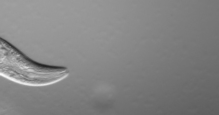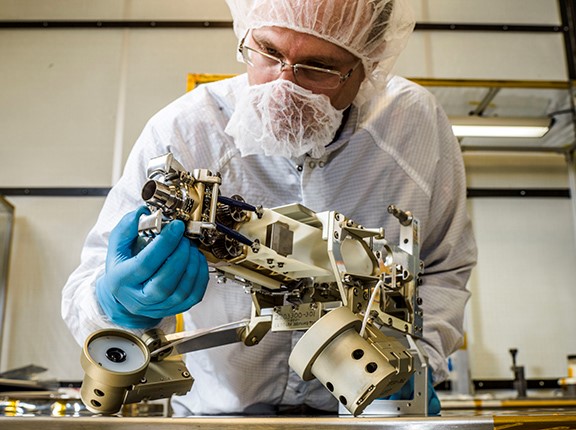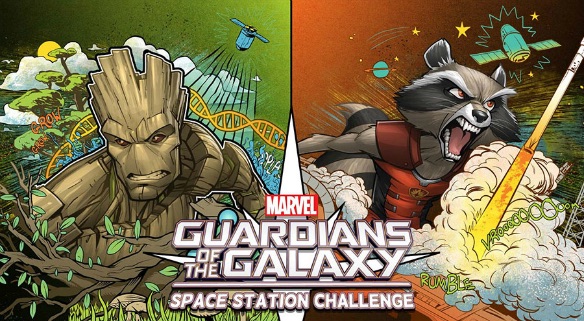Lasers, Crystals and 36,000 Worms Will Ride a SpaceX Dragon to Space Station
There will be 36,000 worms heading to space Dec. 4 — and, if all goes well, 2 million to 3 million will come back down.
The worms, largely apportioned in pouches of 5,000, will reproduce on the International Space Station as part of a study on how muscles are affected by spaceflight. Their ride is SpaceX's next cargo launch to the station CRS-16, lifting off Dec. 4 from Cape Canaveral Air Force Station at 1:38 p.m. EST (1838 GMT). The spacecraft which will also carry tree-seeking lasers, a liquid-methane fueling station, ingredients for "perfect crystals" and much more.
SpaceX's Dragon spacecraft, riding on a Falcon 9 rocket, will carry more than 5,600 lbs. (2,500 kilograms) of tools, supplies and equipment to the space station crew, including more than 2,200 lbs. (1,000 kg) of science investigations. You can watch it live here on Space.com, courtesy of NASA TV.

The multitudes of worms in pouches — a millimeter-long variety called C. elegans — will aid scientists hoping to learn how to decrease the loss of muscle mass brought on by living in microgravity. Some will have changes made to the genes scientists think might impact muscle mass, and others will be exposed to drugs that can affect the molecular causes of muscle mass loss.
"What we're doing in this study is, for the first time … rather than just seeing them change, we're actually going to target them with interventions and see whether we can stop them happening, and whether stopping them happening makes muscle healthier in space," Timothy Etheridge, a researcher at the University of Exeter in the U.K. and principal investigator for the "Worms in Space" mission, said during a news conference Wednesday (Nov. 28). "They're a great model for using to study human changes, even though they're just a 1-mm-long worm; they're excellent because we can target them and intervene in them in lots of different ways, but also at a genetic level, they're actually up to 80 percent similar to human beings."
"Particularly for this experiment, their muscles are both structurally and functionally extremely similar to people, so even more so when we're talking about understanding muscle changes, worms are a very good model," he added.
The worms will be put in an incubator to live for about six days to have babies and grow aboard the space station, Etheridge said — likely bringing the total to 2 million to 3 million, he told Space.com in an email. Then they'll be frozen and return to Earth on a departing cargo ship for analysis. (The worms can survive freezing; some will likely be revived for further study.)
Get the Space.com Newsletter
Breaking space news, the latest updates on rocket launches, skywatching events and more!
These interventions, if effective, could point the way to protecting astronauts on long-distance and long-duration journeys.

To fly on those journeys, astronauts might have to someday harvest fuel from the surface of the moon or Mars — likely in the form of cryogenic fluids like hydrogen, oxygen or methane with a very low boiling point. A new robotic refueling mission traveling in the Dragon's unpressurized trunk, called Robotic Refueling Mission-3, will practice transferring and storing liquid methane in space for the first time.
"If your goal is to drive across country, you're not going to get there on just a tank of gas," Hsiao Smith, deputy director of the Satellite Servicing Projects Division at NASA's Goddard Space Flight Center, said during the conference. "Spacecraft today are limited to the fuel they carry on board. In order to further space exploration, refueling spacecraft is a necessity."
At some point after the Dragon spacecraft reaches the space station and is berthed to its side, the station's 11-foot robotic arm will unload the module and use a suite of three tools to connect a tank full of liquid methane to an empty tank and transfer 42 liters of fluid fluid while monitoring the process. After that, the new tank will store the methane for six months without any material boiling off.
"The robotic tools and vision system demonstrated by [the mission] for refueling missions could also be used for satellites in commerce, navigation or science, benefiting us right here on Earth," Hsiao said. "Not bad for a module that is the size of a washing machine."

Another experiment traveling in Dragon's trunk is the tree-surveying GEDI, short for Global Ecosystem Dynamics Investigation. It will blast three near-infrared lasers, each firing 242 times per second, to measure the heights and densities of Earth's forests, mapping the canopy's structures. The work can help researchers estimate how much carbon is stored within Earth's forests. By the end of the mission, the spacecraft will have made about 10 billion measurements of forest canopy height — and by measuring how much of each burst bounces back or penetrates, and how long it takes to return, they can learn about the canopy's makeup. The laser bursts can measure tree height to within 3 feet (1 meter).
"As far as we know, this is the first time anybody in space has fired so many lasers at the same time at such high power at such high pulse rates, and [it] represents a huge development and advance in this type of technology," Ralph Dubayah, a researcher at the Joint Global Carbon Cycle Center in Maryland and principal investigator on GEDI, said during the conference.
Besides helping them to understand carbon distribution, the observations will also tell scientists about Earth's topography, and understanding the canopy structures can help researchers estimate how fires would spread through forests, Dubayah said. [Pew Pew Pew! Why Scientists Are Fired Up About Futuristic Space Lasers]
Much of the mission's cargo is taking advantage of microgravity: One mission, called the Perfect Crystals investigation, will try to grow crystals from a protein that helps protect the human body from oxidizing radiation. Crystals grown without the disruptive influence of gravity — in the space station's freefall environment — can be larger and more regular, giving scientists insight into the proteins' structure. After the mission, the crystals will head to Oak Ridge National Laboratory in Tennessee for analysis with the lab's special neutron beam.

The next in a long line of mouse experiments will study the physiology of living in space, which can cause effects like bone and muscle loss that resemble accelerated aging. Budweiser is sending its third experiment to examine strains of barley seeds through the process of malting. Two experiments sent by student groups — with themes based on "Guardians of the Galaxy" — will study how well dental glue works in microgravity and search for an alternate way to water plants, according to a statement from the space station's U.S. National Laboratory.
The Dragon spacecraft will travel for about two days as it catches up to the International Space Station, after which the astronauts will use the station's robotic arm to pull it in and berth it to the side of the station. Then, the unloading — and experimenting — will begin.
Email Sarah Lewin at slewin@space.com or follow her @SarahExplains. Follow us on Twitter @Spacedotcom and on Facebook. Original article on Space.com.
Join our Space Forums to keep talking space on the latest missions, night sky and more! And if you have a news tip, correction or comment, let us know at: community@space.com.

Sarah Lewin started writing for Space.com in June of 2015 as a Staff Writer and became Associate Editor in 2019 . Her work has been featured by Scientific American, IEEE Spectrum, Quanta Magazine, Wired, The Scientist, Science Friday and WGBH's Inside NOVA. Sarah has an MA from NYU's Science, Health and Environmental Reporting Program and an AB in mathematics from Brown University. When not writing, reading or thinking about space, Sarah enjoys musical theatre and mathematical papercraft. She is currently Assistant News Editor at Scientific American. You can follow her on Twitter @SarahExplains.









